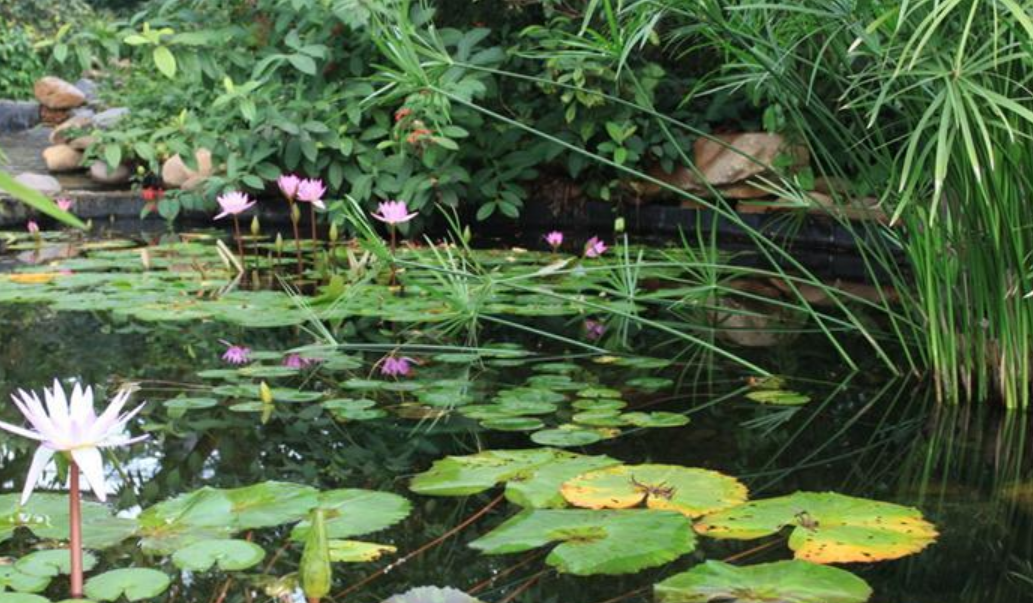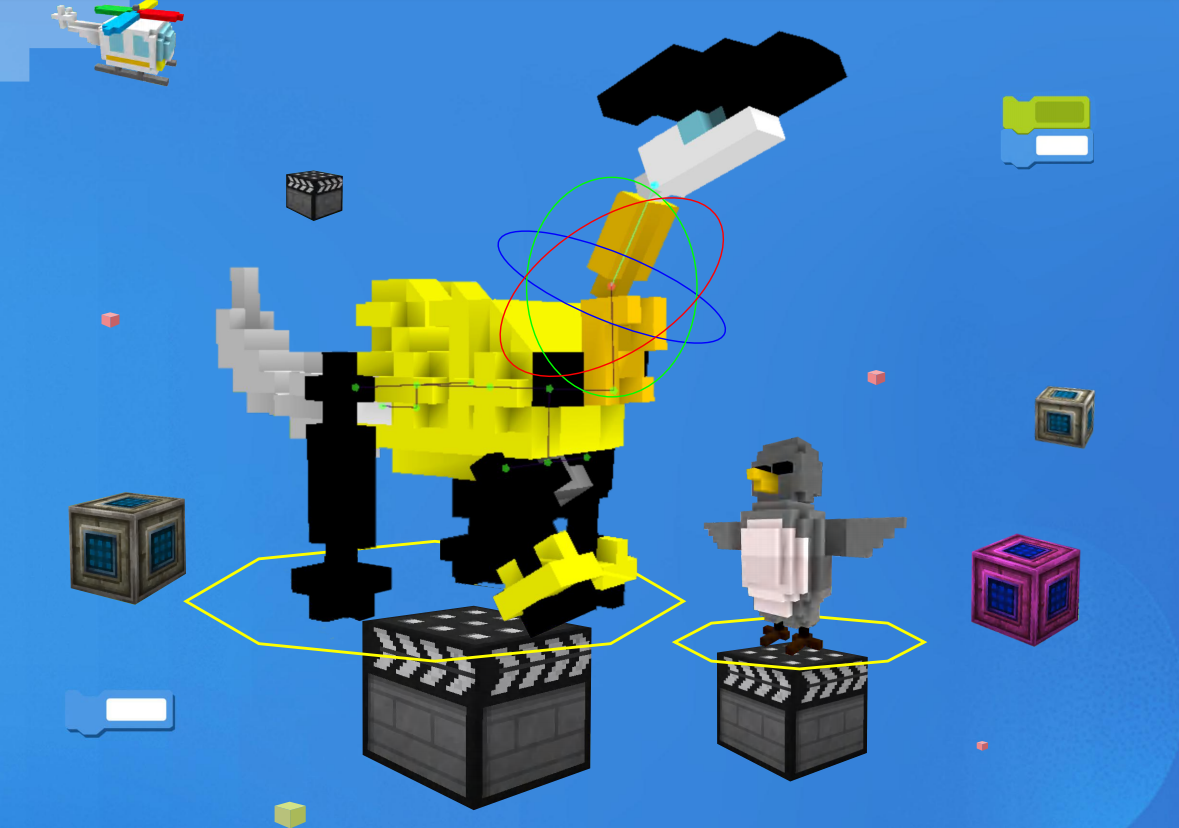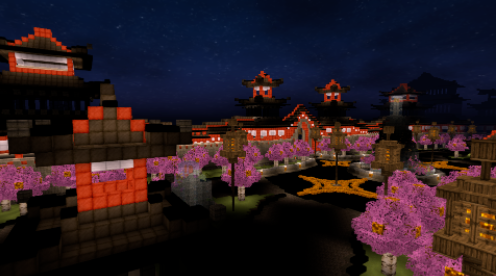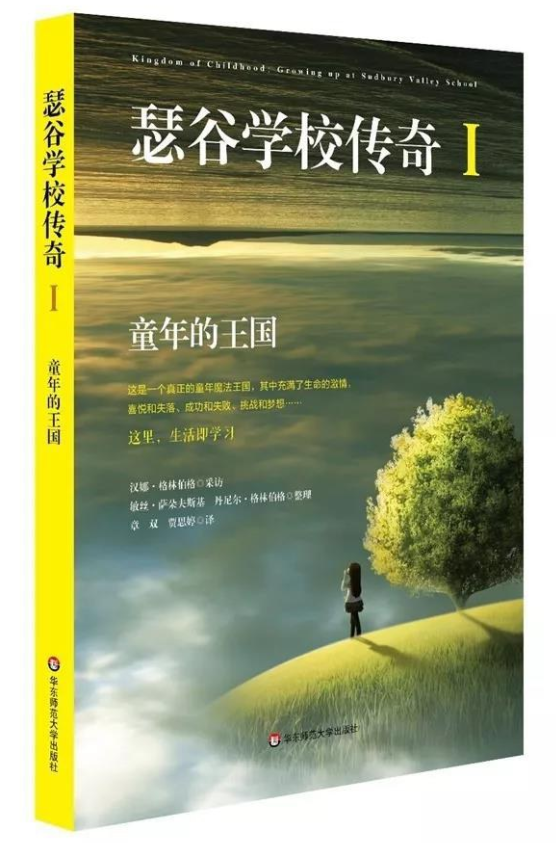中文版
Keywords:
Self-Directed Education, Innovative Education, Sudbury Model, Playground, Mentoring, Exploratory Learning, Self-Directed Learning Community, Psychological Counseling, Equal Conversation, Family Education, Modern Education System, New Education Paradigm
Abstract
SDE or innovative education has sprung up at home and abroad, and has reached a certain scale and become a trend. This paper attempts to make a systematic understanding of the patterns of these different educational practices from a deeper level, and to gain a deeper understanding of the three obvious modules of these education communities: life, knowledge and psychology, as compared with the old education system, in order to form an understanding of the new educational paradigm.
Notice: please read slowly, as I intentionally write in a way for slow reading and contemplating.
SDE or innovative education, from the surface, we can say they all have life, knowledge and psychology three big modules. Let’s talk about these three modules and then we will look deeper into then to see what they have in common.
Innovative education often advocates life is learning, advocating learning should come from life, so in all kinds of innovative education, the scope of learning will often be close to students’ lives. Such as movie appreciation, cooking, novels, board games and so on.
Some of these innovative education will pay more attention to knowledge learning. Some will even offer traditional subjects like that in modern education, such as English language or mathematics, still having the concept of a standard curriculum system of modern education. Some will let students and teachers to all participate in the curriculum design, such as at the beginning of a semester and allow students to choose their favorite courses. In this way, the concept of the standard curriculum system has been weaken, but there is still the concept of the curriculum system.
The Sudbury model, we should mention, has never offered a course for all students across the whole semester. In the early days, several individual students initiated requests that the staff of SVS (there is no teacher in Sudbury, adults are all staff) give some lessons on certain topic, mostly for a short period of time. Or students who are about to graduate and decide to take the college entrance exam will apply for specialized tutoring by SVS staff. In recent years, because of the rise of the Internet, these short lessons have almost disappeared in SVS. I feel SVS’ value has always been more opposed to the concept of curriculum.
But there were schools that used to be the Sudbury model, made a change due to requests from students, mainly because students saw so many classes in traditional schools, they felt pressured to have their own curriculum every semester. So they started as described above at the beginning of each semester students and teachers together will develop this semester’s courses and students can choose what courses to take to get credits. But the school has also reserved another track for students who prefer the Sudbury model, the Sudbury track, which means that no class-taking is needed.
Many of Silicon Valley’s big tech companies are also making educational innovations. Google, Facebook and others have set up their own schools. Perhaps because it is this type of technology company that started the school, and which are aimed at their employees’ children, so knowledge learning is very strong at these schools. A lot of emphasis is put on the learning of various systems, such as road system and electricity system. Another focus is project-based learning.
There are some such schools in China that can be considered to be oriented towards the elite, although they are also doing educational innovation and consider life learning skills very important.
Therefore, in innovative education communities, there is a split between life learning and knowledge learning. For a significant number of people, at least, the two are not the same.
Here’s we share a view from Sudbury founder, Dan, a former physics teacher at Columbia University. He believes that for most people, learning so much about math is unnecessary. If you’re not doing engineering or science work, for most people, it’s enough to learn arithmetic and statistics.
When looking at the memories or interviews of the graduates of SVS, I was most impressed that these Sudbury graduates have a strong ability to explore life and can do the deepest level of thinking, although they did not take any courses in Sudbury. Perhaps it is precisely because there is no curriculum in Sudbury, which gives them the ability to think and explore freely.
There are no courses in Sudbury, but there are books everywhere. SVS consciously set up entire wall shelves in all rooms, filled with books. There is also a special conversation room for people to converse on various topics. I understand these are to build up the concept in people’s minds that “knowledge is everywhere and everyone should create their own knowledge”. Dan, the founder of SVS, said that knowledge are models in the human brain, and that everyone is creating their own knowledge.
Now in most schools, there are psychological counseling teachers in solving some of the students’ psychological problems. In the innovative education communities, it seems that they pay more attention to psychological health of the students. For example, the Agora Learning Community has Growth Mentors who have a constant focus on the mental growth of students. I don’t know much about the detailed work responsibilities of Agora’s growth mentor, but I feel they’re doing it quite systematically.
I think we all notice that in all the SDE communities, there are a lot of games, all kinds of games, such as board games, video games, playing cards and chess, all kinds of sports, dancing, musical instruments, watching movies, writing novels, traveling and so on. I believe that we all have played these as we grow up, and have experiences of playing them, some might be good experiences, some might be bad experiences. By comparison with others during these games, everyone can find a lot about themselves through these games. This is actually a very good place for education, and it is an educational place that every family can have. A good coach knows how to provide different guidance to students with different personalities. The core of the guidance, I think, is to give students the confidence to explore for themselves.
Each child is different, and each person has a different starting point. Some people are very confident from the beginning, while others may care more about the feelings of others. Life is rich and people are diverse. Good mentors/coaches should be able to notice these rich diversity at different levels. Some people may not be very good at sensing and exploring in a certain environment. Good coaches should be able to keep an eye on this and give these kids room to feel and explore better. Of course, in a generally speaking equal and tolerating environment, all children can feel and explore well. Bad environments, such as parents or coaches who like to scold, make it harder for these children to feel and explore on their own. Creating an environment where different children can play together and be able to feel and explore on their own makes a good educational environment.
I understand the role of a psychologist, a large part of which is to create a safe environment of mutual trust. With such an environment, daily play can become a good place for learning.
Therefore, we can say that psychology, in addition to life and knowledge, should be one aspect that a learning community must pay attention to.
Omnipresent and equal conversation is also an aspect of shaping such an environment. Mimsy, the founder of SVS, has talked eloquently about the omnipresent and equal conversation in SVS, arguing that it is the central thing in the SVS model that replaces the curricula of other schools. In fact, as long as there are common things people are interested in, or specific things to do together, equal conversations can become the best place for education. Like conversations we observe between children, they are conversing of their own significant experiences or making short summaries, instead of lecturing lengthily like teachers do in schools. I believe that many parents also find it helpful to do things together with their children that are of mutual interest and to converse their experiences equally while engaging in these activities, just like friends together.
Therefore, education can be omnipresent. First of all, you have to have play, preferably a lot of people play together. Learning will certainly happen in playing. The key to make a good learning environment lies in the respect for equality and diversity. Play/learning/creation is the three in one life activity, in which we get the fundamental life experience. Equality manifests itself as diversity in life. We experience equality through our respect for diversity. A good educational environment should be one in which there is a wealth of play/learning/creation activities, where there is playground, plus respect for equality and diversity, to let everyone feel and explore freely and in self-directed ways.
Family is a good place for education. Every family’s parents can be the best teacher. For the learning communities, they just have more people to play together. A large part of what many self-learning communities are doing now is making up for the damage that students have been subject to at home and in schools if they have been to traditional schools. These injuries are psychological, but can also be considered to be learning/educational, such as losing self-directed learning capacities.
So from the above we can see that in these SDE communities, there are obviously these three big modules: Life, Knowledge, Psychology. However, below I will argue that their distinction is superficial and artificial. They are actually deeply connected, if we realize that to learn is to explore, to feel, and to create your own knowledge.
In fact, from my experience, even in the learning of knowledge, the ability to explore is the most important. There are many things to learn in life, and we must grow our knowledge organically. So the ability to feel and explore is very important.
The lecturing way of teaching in modern education, it is its nature to drive students to the direction of knowledge memorization. This was well understood at the beginning of the modern education system, which was designed to make the mass quickly memorize terms and subject matters in order to become industrial workers to work around machines. Nor do we deny that the ability to remember quickly is useful. But we must remind ourselves that modern education is so misery if it only trains people to remember things, since it has taken up so much time of people’s life. There are too many skills to learn. Perhaps the most important skill is the ability to explore in complex life systems. And to truly master a large amount of knowledge, you cannot rely on memorization, instead you have to rely on self-directed feel and exploration to form organic knowledge with their own understanding.
As I mentioned in the educational model of Paracraft Learning Center, learning based on significant experiences and abstract modeling is the most efficient learning.
Now the innovative education has just come out of the traditional modern education system, many models are still influenced by the modern education system, it is difficult to get rid of the old model all together at once. But with the deepening of our practice, we should gradually form a new understanding of education, and really get rid of the old educational paradigm.
Now many educational innovations, have realized that learning shall tend to the needs of students, to be centered around students, and do the curriculum design accordingly. However, it has not departed completely from the traditional education’s lecturing and knowledge memorization model. The curriculum model is still easy to drive students automatically towards knowledge memorization, and it does not realize the self-directed feeling and exploration are the core of learning and education, and does not realize that self-directed feeling and exploration are what run through life, knowledge and psychology all together and make the three an integrated whole. Traditional lecturing and knowledge memorization model automatically drive students away from their natural self-exploration process. So we see that SVS graduates who don’t take courses have a strong ability to explore life and are able to think from the bottom.
As the founders of SVS said, we must create our own knowledge! In modern educational theory, the concepts are knowledge transfer and knowledge retention, so various means, such as asking questions, doing projects, etc., are used as means to increase knowledge retention and to achieve better knowledge transfer effect. But in fact, knowledge is created by the individuals themselves. It is like one candle lighting up another candle. The ability of a candle to give light is the inner ability of a candle. Knowledge transfer and knowledge retention are pseudo-concepts. Realizing that we are all creating our own knowledge, we can then form a new and correct understanding of the various patterns of teaching and learning.
I have been following up and have also been personally involved in educational communities targeting young migrant workers in the city. It should be said that this group has the most real learning needs, there is no tests for them to take. In their educational practice, they should get rid of the shackles of the old educational paradigm and practice the best educational model. But for those schools serving these groups of students, because they have just come out of the old educational paradigm, it is still difficult to get rid of the influence of the old educational paradigm, so unconsciously they still have a lot of traces of the old education, without realizing that there can be a better way.
The teaching/mentoring design based on significant experiences that I talked about in my previous article is about how to adopt some kind of conversation/mentoring way of teaching based on significant experiences without changing the existing curriculum of these learning communities.
Of course, that’s not to say you can’t make lectures. The teacher’s lectures with his own rich experience is very wonderful. If the students just listen, they can also gain a lot. And for very young students, if you don’t say a thing, they don’t know a lot of things. But I think, as soon as we have successfully introduced the topics to the students and aroused their interests, teachers should immediately stop the lecturing, and instead introduce related playgrounds to students, encourage students to explore by themselves, and share their exploration processes and what they find. Teachers can provide guidance according to their rich experiences. Therefore, the lecturing, as a means of to induce interests is ok, but should stop when needed.
I have noticed that some of Agora’s students already have a strong ability to explore knowledge, and have a strong sense and thinking about what to learn and how to learn. I converse with them only to acknowledge their feel and thinking, and share what I have sensed while they might have missed, after all knowledge is a very complex life system, it takes a certain amount of time to gradually accumulate experience. But these students have developed a rather complex ability of feel, thinking and exploration skills, I think this is what the traditional lecturing way of teaching cannot achieve. I think learning is about developing such abilities gradually.
We know that there are this kind of conversation based teaching in some universities. I haven’t experienced it myself in the university, but I’ve heard a lot of people saying that teachers and students in graduate schools in Europe have a lot of one-on-one conversations. My freshmen year history teacher was teaching us mainly in this conversational way, and it had impressed me very deeply and inspired me greatly. He asked us many questions in class.
Does anyone think this approach is very demanding for students, and only applicable at universities? I don’t think so. In fact, this way of teaching is also very rare in colleges.
Some people say this way is very demanding for teachers? I don’t think so. Teachers do need to have their own rich learning experience, and also need to learn to teach this way because they might have been used to how teachers teach in classrooms. But it should not be difficult. It should be quite easy for teachers with rich learning experiences to switch to this way of teaching once they realize that it aligns with their way of learning very well! It should be much easier than training teachers for lecturing at school.
I think the real reason is that we need to have a clear understanding of the distinction between lecturing of textbooks and mentoring for exploratory learning.
We also notice that good mentors or coaches rarely do lengthy lecturing. They many times simply tell you where to try, point out relevant knowledge, the rest are left to you to explore.
I didn’t work full-time as a teacher, but while I am a part-time teacher, I always felt comfortable (of course, I teach in the mentoring way. If it were the traditional lecturing way, I would still feel very awkward), can quickly apply my experience of learning and teaching in real life. For example, in the “teaching” in the real life scenarios, one of the methods I often use is to instantly point out the relevant knowledge models or significant experiences that the other person is exposed to, to instantly expand the other’s knowledge around their current significant experience, or to make connections with their existing knowledge, so to generate learning interest in them, or to make them experience the joy of knowledge. This, I think, is similar to Sudbury’s ubiquitous books. These experiences, I naturally apply them in the formal teaching places.
Learning and teaching are ubiquitous. For a teacher, the first thing they need is a lot of learning experiences. As an edupreneur, it is best to have learning experiences of several large and different areas. Secondly, teaching is ubiquitous. Teaching in many informal settings of life can instead cultivate the skills to “teach” on the basis of full respect for equality and diversity, and accumulate a great deal of experiences on that. These experiences are precisely what we need in order to create a new educational paradigm and to get rid of the old educational paradigm. We are not still at the stage of breaking up old things. Now we need to build a new understanding of education, a new paradigm. Only in this way can innovative education or SDE be “powerful” and spread to the wider population, and find models that can be replicated, so that more people can have access to SDE.
When I used to hear the word “informal learning”, I always argue that informal learning is actually the real learning, the formal learning. Now I would like to say what we really need is informal learning. Because once the learning becomes formal, the two opposing identities, teachers and students appeared, the relation between people start to gets distorted, it is then difficult to achieve equal conversation anymore, thus we have lost the education. Therefore, to do education, what we want is informal learning, so that learning and teaching can return to their original “omnipresent” nature, so we can have a lot of “teaching” experience in informal learning scenarios.
Paracraft Learning Center is the educational model that integrate life, knowledge, and psychology together. Because the Paracraft Learning Center is part-time and each student participates only two to four hours a week, so we are unable to provide psychology counseling teachers like many full-time SDE communities. But the PLC is to give students who keep running from lessons to lessons and have always been led by the teacher by the nose, a breathing space, and some free space for self-exploratory learning. We believe that giving children such a free and self-directed space to explore, to participate in play/learn/create three in one life activities, to gradually build up life self-confidence, to learn the life expression, is the way to rebuild life. Various psychological problems can be healed in this process.
Paracraft itself is a very rich playground, where different children can play for life discovery. And as a spatial intelligence based software education platform, Paracraft also contains a wealth of knowledge. It is developed with a transparent architecture that allows potential children to even learn the underlying knowledge of 3D animation engine and artificial intelligence design. And these knowledge learning, not through the way of the curriculum, although we also have a small number of courses and a large variety of courses, but students are most of the time working on projects in our rich playgrounds (including learning resources) to explore the self-directed learning. Mentors mentor them through observation and conversations, guide them to restore and enrich their ability to explore and to create their own knowledge.
We see that the outstanding students graduating from modern education system often lack life skills and conversation skills. At the same time, because of their high grades at school, they mistakenly think that they are good at learning, but actually they do not have the skills to explore the truth by accumulating various facts and significant experiences, even if many of them have good thinking ability and feeling capability, and can subconsciously use these abilities.


































